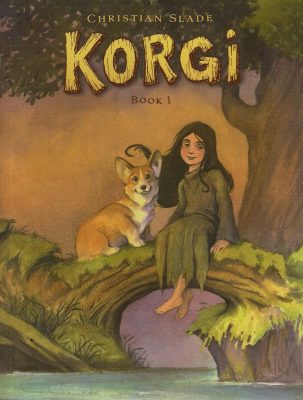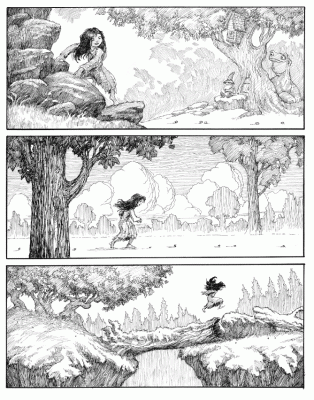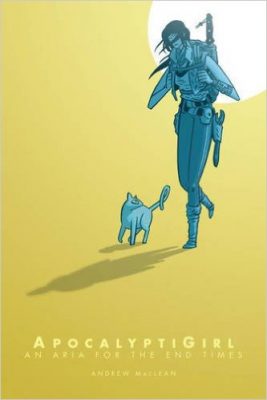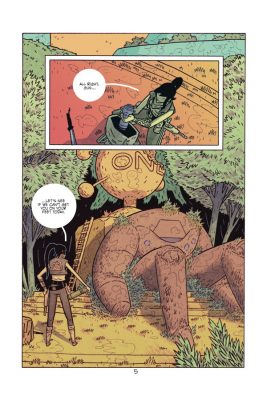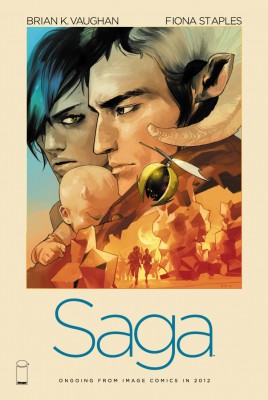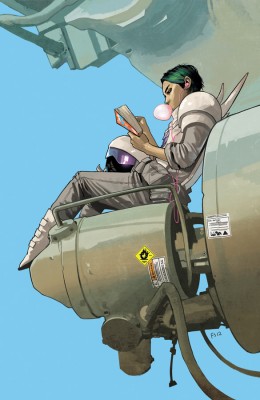K. J. Bishop’s “Beach Rubble” was first published in Borderlands #1, and recently republished in her short story collection That Book Your Mad Ancestor Wrote (2012). I’ve been rereading the collection lately for the first time since it came out, and eventually hope to write about most, if not all, of its contents in one way or another. (I’ve previously written about “The Heart of a Mouse” here, I realize.)
“Beach Rubble” is a dreamy, melancholy story of a brief romance between a young man (Zack) and a woman who might be very old indeed (Melusine), set on a virtual-reality island. It shares with The Etched City and “The Love of Beauty” the figures of elusive, alchemical women, and a certain procedural similarity to the bazaar segment of “We the Enclosed,” in its searching-through of accumulated objects for personal meaning. As an expression of the latter, I quote below a particularly beautiful and resonant passage, which works both as an expression of straining to apprehend a loved one who never quite drew near enough, and as an embodiment of the way that many of Bishop’s characters use ornamentation and artifice to delineate their identities.
“I’ve been going through all the stuff in the Lost and Found, looking at the things she chose to keep, discovering something like the shape of a hollow where she had lain in thousands of other people’s minds.”
Throughout Bishop’s work, that luxuriation in surface and artifice rarely goes unaccompanied by a shadow of misgiving: “Art is lust!” accuses the Beast in “The Love of Beauty,” and “the artist is a pornographer!” We see too a few flinching encounters with the ultimate descendant of the love of objects: mass production and consumerism. I think again of the bazaar episode in “We the Enclosed,” of the warped economy in “Heart of a Mouse,” and the several encounters with the pale uncanniness of suburbia in “Enclosed,” “Vision Splendid,” “She Mirrors,” and probably others.
In “Beach Rubble,” the virtual-reality setting is a useful means by which Bishop deepens and makes stranger that discomfort. Here there are no real tigers (sorry, Gwynn and Beth; thinking also of Wallace Stevens’ “tigers in red weather”), only a multiply mediated rendering of one: a virtual rendition of a carved ivory tiger’s head, delivered by a digital art gallery service. Real tigers, back on real Earth, are extinct, it’s suggested too.
And the exotic setting is, of course, beautifully done –
“The room was decorated with old prints and dwarf palms in African pots. Big windows faced the sea, where dhows and a couple of sailing schooners were drifting around in a world of sun-ignited blue.”
– but that exoticism is obliged to be more self-conscious than anywhere else: “Dark-skinned drones simulated a bustling population.” And all of this idyll funded by a Swiss bank account…
Melusine is a potent choice of name for the female protagonist. It entails secret-keeping (which is this Melusine’s ultimate aesthetic, and which she passes on to Zack), and watery elements, and an actual tail. I like to think that this Melusine might have tried on the alias in an effort at solidarity or identification with the mermaids whom she claims to have stolen her husband. “On nights after that I sometimes glimpsed their long cold tails flashing in the water, but I never saw my husband again.”
The insistently present element of water formed an interesting locus for many of my thoughts about Bishop’s fiction, though the water in “Beach Rubble” is a repetitive and encircling ocean. I associate Bishop’s work more with rivers, tributaries, a sense of continual onward-flowing. Some kind of end, some kind of drastic change in state is approaching (the edge of the Teleute Shelf in “The Art of Dying,” with its mysteriously nonvisible waterfall?); things very soon will not be as they were before; but the river keeps flowing.
I think of Beth’s fishing float being carried away, and her metaphor of whirlpools meeting, parting, and traveling on; of the water that carries the Gleeful Horse to Molimus; of the way that Zack in “Beach Rubble” sends his bottle-enclosed secrets floating out like feelers into the surrounding world, breaching the hermeticism of Melusine’s island; of the way we see Gwynn and his various analogues stride out again and again into various evenings and towards various ends, without ever quite ending.
Another piece of fiction that came to mind while reading “Beach Rubble:” Kelly Link’s story about a superhero convention and a MMORPG Missed Connection, “Secret Identity.” (This was most recently collected in Get In Trouble, which I have yet to pick up.) For me it’s not so much the obvious connection via virtual-reality romance, as it is the light, colorful, playfully sad way that both authors handle the irreal shine of video-game lives and mechanics. I wish Bishop’s shark programs handled my spam:
“It was your smooth white sand and coconut palms kind of beach, with lulling, sparkling wavelets, and parrots and gulls for colour and noise. Efficient shark programs patrolled the water. I’d never seen a single porn bottle or other spam object on the sand.”
—
As a side note, apologies for the lack of activity around here lately. I’m coming close (ish) (maybe!) to the end of my PhD, so time is at a premium, and writing here has had to fall off my priority list.
Go to:
K. J. Bishop: bio and works reviewed
The Etched City, by K. J. Bishop (2003): review by Emera
“The Heart of a Mouse,” by K. J. Bishop (2010): review by Emera
